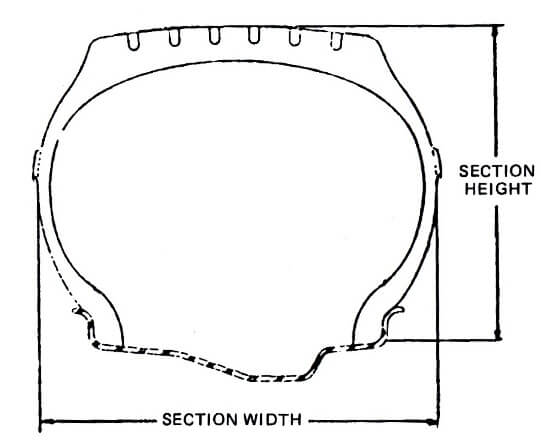To many, the markings on tyre sidewalls may appear to be confusing. However, once you know the code they are in fact quite useful. The following information relates to a typical passenger car radial tyre.

A – The brand, make and model of the tyre.
B – Section width
These three numerals show the section width of the tyre in millimetres. The section width is the total inflated width at its widest point (excluding sidewall ribs and lettering) – the next diagram will make this clearer. In some cases the letter "P" will precede the numerals – this is a minor marking system variation and just indicates the tyre is for a passenger car.

C – Aspect ratio
The second number is the aspect ratio or profile of the tyre. This number tells you about the section height of the tyre, by expressing it as a percentage of the section width. So in the case of a P205/60 tyre, the section width is 205mm, and the section height is 60% of that. The lower this number the lower the tyre’s profile. The aspect ratio for a passenger car is typically between 50 and 75. However, high performance cars may use tyres with aspect ratios as low as 30.
D – Construction
The single letter designates the type of tyre construction – R stands for radial.
E – Rim diameter
This is the nominal rim diameter to which the tyre must be fitted. This measurement is always expressed in inches.
F – Load index
This index number is checked against a chart to determine the maximum load, in kilograms, the tyre can carry at the speed indicated by its speed symbol.
G – Speed rating
This symbol is also decoded by referring to a chart to determine the maximum speed to which the tyre has been safely tested. Passenger car tyre speed ratings start at N (140km/h) and go through to Y (300km/h).

